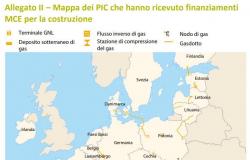The convenience of wireless charging there is no doubt: just place the smartphone on a charging base and the phone starts charging, without it being physically connected to any cable. This charging method therefore brings with it many advantages but, at the same time, also some disadvantages, such as the poor charging efficiency both in energetic terms – and therefore cheap – both in terms of time.
The test for measuring energy
In 2016 a research group from the University of Mauricius carried out a test to measure electrical energy consumed by a mobile phone during 6 different charging conditions. In all six scenarios, charging was measured between 1% and 100%. The scenarios identified are:
- Charging with cable with cell phone turned off (S1);
- Wireless charging with cell phone turned off (S2);
- Charging with cable with mobile phone on and in standby (S3);
- Wireless charging with mobile phone on and in standby (S4);
- Charging with cable with mobile phone turned on and wifi turned on (S5);
- Wireless charging with mobile phone turned on and wifi turned on (S6).
The electrical energy consumed was measured with a digital wattmeterdetecting the value of the absorbed power every 5 minutes, throughout the charging phase, without the device being used or touched. For each scenario, three measurement cycles were repeated, in order to verify and guarantee the reliability of the values detected and for each scenario analyzed the average values of the individual measurements were subsequently calculated.
The results of the phone test
For what concern value of energy consumed and the average total charging time used during each scenario, the values obtained are the following:
| Scenario | Average charging time (minutes) | Average energy consumed (kWh) |
|---|---|---|
| S1 | 85 | 0.014 |
| S2 | 201 | 0.018 |
| S3 | 87 | 0.014 |
| S4 | 205 | 0.020 |
| S5 | 87 | 0.014 |
| S6 | 213 | 0.021 |
Analyzing the values of power consumed it is as obvious as charging with the cableregardless of the mobile phone’s status, is more efficient than wireless (a difference of approximately 0.006 kWh). But the data that certainly catches the eye the most are those relating to charging time. Also in this case, regardless of the state of the mobile phone during charging, you can immediately see how the wireless charging request more than double the time to recharge the same device with the cable.
Because wireless charging is less efficient
The shortest charging time is determined by a lower charging power of wireless charging (about 40% less) because this is limited both by number of turns both of the coil installed in the charging base and from the one present in the mobile phone. The extra energy consumed during wireless charging, on the other hand, is caused by the dissipative effects that occur during a recharge of this type:
- Not all of the electromagnetic field generated by the charging base is concatenated into the receiving coil present in the mobile phone, and therefore a part of this flow he comes lost in the surrounding environment without being effectively transferred.
- The two coils have internal electrical resistance, so some of the transferred energy is dissipated in the form of heat (it is the so-called Joule effect). This dissipative effect is also present in cable charging, but the equivalent length of the cable, compared to that of the two coils, is decidedly shorter. All this translates into lower electrical resistance in favor of cable charging, with consequent lower dissipation due to the Joule effect.
The difference between the types of top-ups on the bill
By analyzing the energy needed and converting it into euros (assuming a price of €0.50/kWh) each top-up would cost approximately 7 thousandths of euros for the charging with cable And 1 euro cent For that wireless. Even if we are really talking about values paltry when taken individually, if instead scaled on an annual basis and for each single device recharged globally the weight of these numbers is evident it can no longer be overlooked.
Making an approximation and assuming that there are something like this in the world 8 billion cell phones and let half of these come recharged every day for a year only via wireless charging, this would mean that an additional amount of energy would be used compared to charging with the traditional wire 8.76 GWh, i.e. the 12-hour energy consumption of the city of Milan.






